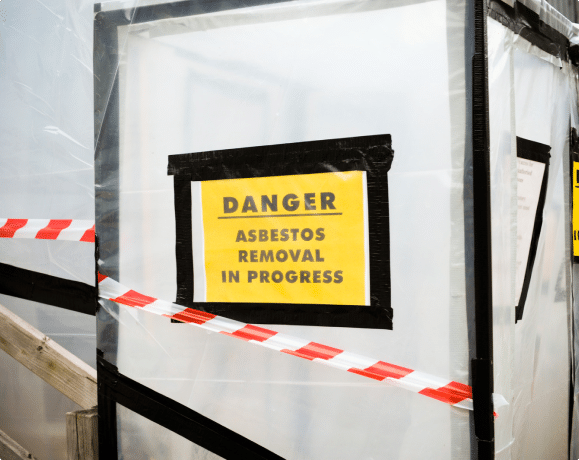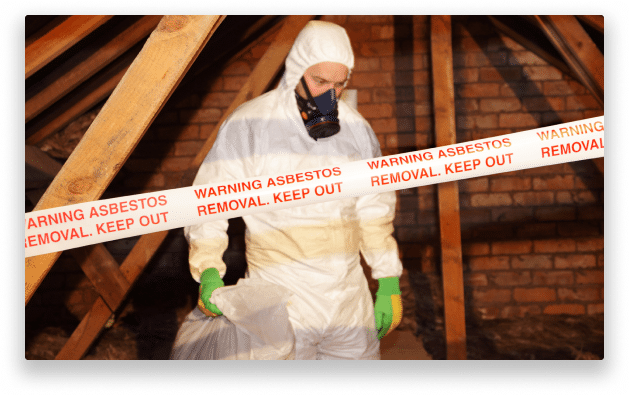
Asbestos in Schools: Have You Been Exposed to Asbestos?
Children, teachers, and other staff members are exposed to harmful asbestos in schools daily, potentially leading to serious long-term health concerns, medical bills, and trouble carrying out day-to-day activities. Learn about the dangers of asbestos, the regulations about its removal, and how to get help if asbestos exposure has sickened you or a loved one.

Expertise
Mr. Wasserberg is proud to call himself a Trial Lawyer. He is often a featured speaker at industry summits and gatherings of the nation’s leading attorneys, from both sides of the bar. He is recognized by both his peers and his adversaries and is considered one of the nation’s premier mesothelioma and negligence attorneys
Content written by Dan Wasserberg

- Expertise
Mr. Wasserberg is proud to call himself a Trial Lawyer. He is often a featured speaker at industry summits and gatherings of the nation’s leading attorneys, from both sides of the bar. He is recognized by both his peers and his adversaries and is considered one of the nation’s premier mesothelioma and negligence attorneys
Experienced Mesothelioma Attorney

Bonnie Steinwolf
“Most schools throughout New York state were constructed with the use of asbestos containing materials, so the risk of being exposed to asbestos exists even today.”
Quick Links
Construction builders commonly use asbestos in schools and other buildings because it is an inexpensive, fire-resistant insulator. The public wasn’t aware of the dangers of asbestos exposure until the 1970s.
However, asbestos is still prevalent in older buildings, including some schools.
Understanding Asbestos Exposure in Schools
New York City Public Schools maintains 1,300 buildings covering 130 million feet of floor space. There are an additional 274 charter schools, 128 of which are in buildings the New York City Department of Education leases or owns. The average age of public school buildings is 66 years, and many were built during the height of asbestos use.
The Lingering Threat of Asbestos
The law rarely requires schools to remove asbestos, as removal poses its own dangers. Asbestos in schools lingers in places such as:
- Ceiling and floor tiles
- Insulation
- Plumbing pipes
- Electrical wiring
- Bricks and mortar
In 2020, the New York City School Construction Authority began an extensive asbestos removal project at PS 87 that will occur when students and staff are in the building. Unfortunately, this isn’t uncommon in New York City or nationwide as school districts try to balance education and safety.
Where was Asbestos Used in Schools?

Health Risks of Asbestos Exposure
Airborne asbestos fibers get trapped in people’s lungs, becoming embedded in the tissue. These fibers can cause scarring and inflammation, leading to breathing problems, coughing, and other respiratory issues. In the long term, asbestos exposure can lead to severe illnesses such as asbestosis, pleural disease, lung cancer, colon cancer, and mesothelioma.
Impact on Students and Staff
Students, staff, and teachers all face the risk of asbestos exposure in school and the risk of developing serious illnesses, sometimes decades later.
- Children and Asbestos Exposure

more likely to develop mesothelioma and other asbestos-related conditions. It can be challenging to pinpoint the exact effect on children because they often develop symptoms much later in life.
A review of studies on asbestos exposure in children and the risk of lung cancer and mesothelioma showed mixed results. Four studies showed an increased risk after childhood exposure, while two did not. What may be most apparent is that we need more research in this area. Exposure in children could mean longer-term exposure overall, a known risk factor.
- Teachers and Support Staff Exposure Risks

Children go in and out of classrooms during the school day, but teachers and staff may spend most of their workday in a dangerous room. Custodial staff may spend significant time in boiler rooms, where asbestos exposure risk is often greater than in other parts of the school.
Could I Have Been Exposed to Asbestos in a NY School?
Health Implications of Asbestos Exposure
Several health problems are linked to asbestos exposure, and people with existing respiratory problems are at even higher risk.

Respiratory Health Concerns from Asbestos Exposure
Asbestos exposure can lead to scarring and inflammation in the lungs and may lead to pleural effusions, a fluid build-up outside the lungs. People with asbestos-related respiratory problems experience coughing, chest pain, shortness of breath, or labored breathing.
Long-term Health Effects
Prolonged asbestos exposure can result in severe health conditions such as the following:
- Asbestosis is scarring in the lungs that blocks the passage of oxygen and carbon dioxide.
- Larynx, lung, colon, ovarian, and other forms of cancer are linked to asbestos exposure.
- Mesothelioma is an aggressive cancer that develops in the membrane covering the chest cavity, lungs, and other organs.
Symptoms from asbestos illnesses may appear years after exposure. Mesothelioma can take 10-60 years to develop, and patients’ average life expectancy is 4-18 months, though some live longer.
Regulatory Guidelines for Asbestos Management in Schools
The Asbestos Hazard Emergency Response Act, a provision of the 1986 Toxic Substances Control Act, requires schools to inspect for asbestos and have management plans to reduce or prevent the hazards of asbestos.
New York formed the State Department of Health Asbestos Safety Training Program to conduct school audits and help schools with asbestos problems. Schools are not usually required to remove asbestos unless the material containing it becomes damaged, which would allow fibers to become airborne.
Challenges in Ensuring Compliance With Asbestos Regulations
Even school administrators who want to ensure asbestos regulation compliance face budget issues that make it difficult. They must also deal with the challenge of inspecting materials such as asbestos ceiling tiles in schools with as little disruption as possible.
Asbestos Management and Regulations
Several federal and state regulations guide schools in managing asbestos. Following the various guidelines can be challenging due to limited school budgets and the overall management needs of schools.

Mitigation and Prevention Strategies
School districts can use several strategies to help protect their students and staff from asbestos exposure.
Asbestos Removal vs. Encapsulation: Best Practices
The Environmental Protection Agency recommends that schools’ asbestos-containing materials be kept in good condition. When there is damage to those materials, it recommends spraying the material with a sealant to prevent fibers from escaping. This method is called encapsulation.
Removal should only occur under stringent conditions and when the damage to the materials is so severe that other methods won’t stop asbestos fibers from escaping. Poor removal practices can make asbestos exposure worse.
Importance of Regular Inspections and Maintenance
Based on the Asbestos-Containing Materials in Schools Rule, schools must conduct an initial inspection and reinspect asbestos-containing materials every three years. Failure to conduct these regular inspections can result in school closures and health risks. Schools are also required to maintain and update an asbestos management plan.
This plan must include details regarding notification procedures, periodic checks of known asbestos-containing materials, and a contact person to ensure the plan is implemented correctly.

Community Awareness and Advocacy
Getting all stakeholders involved in the health and welfare of school children, teachers, and staff is critical to containing asbestos exposure and asbestos-related illnesses.
- Raising Public Awareness About Asbestos Risks
Teachers and parents can use resources to raise awareness about asbestos risks and use them to model outreach in their communities. The Asbestos Disease Awareness Foundation is a nonprofit organization that offers several educational and advocacy ideas and up-to-date information on specific exposure risks.
Teachers and parents can share information from this and other advocacy and educational groups with each other and to broader audiences on social media and at school meetings.
- Collaborative Efforts: Community and Legal Action
Some schools still have dangerous levels of asbestos and are not taking proper safety measures. Community groups of parents, teachers, and concerned citizens should take these schools to task. Ask for the school’s asbestos management plan and report any ways in which the school is falling short.
Parents and community members can band together to pressure state and local politicians to address the problem if necessary. They can also take legal action if schools refuse to protect their students, teachers, and staff.
Ensuring Safe Learning Environments
Schools should be safe places for teachers, staff, and students, free from hazards such as asbestos exposure. Accomplishing that means public school systems must focus on safety, and parents and teachers must be educated and involved.

School Policies: Balancing Education and Health
Schools must perform a balancing act when providing a solid education while maintaining the health and safety of their students, teachers, and staff members. Some asbestos abatement or removal projects can happen overnight or during summer or other breaks, but big projects may have to occur while the school is occupied.
All school systems should have a plan for worst-case scenarios, such as moving students to another school if they identify a severe asbestos problem. Several schools in Philadelphia closed in 2023 due to the dangers of asbestos exposure from damaged materials. It is the second time for two of those schools.
Empowering Parents and Teachers for Safer Schools
Teachers and parents should actively monitor asbestos in school buildings as much as possible. They should ask for asbestos management plans, which schools must provide within five days. They should contact the person designated to oversee the plan and ensure the school follows all laws and regulations on asbestos.
Parents and teachers can also collaborate to develop a list of schools with asbestos problems and how and when the district or other supervisory body will address them. They can pressure the district if they disagree with a plan or feel one is needed.
Legal Framework and Accountability
Past asbestos cases have led to the development of a legal framework that allows people to hold parties responsible and seek compensation, regardless of how long after exposure their illness occurred.
Exploring Legal Avenues for Compensation and Justice
You can file a personal injury suit to seek compensation for your asbestos-related illness or a wrongful death claim on behalf of a loved one who passed away. Asbestos-exposure economic and non-economic damages can include medical bills, lost wages, pain and suffering, funeral expenses, and other compensation.
New York’s Mesothelioma statute of limitation give you three years after you know of your illness to file a personal injury claim and two years after a wrongful death.
Holding Responsible Parties Accountable
Most lawsuits for asbestos-related illnesses target manufacturers. They knew the risks of asbestos exposure and kept producing and selling their products anyway. You may also be able to sue the city or state if you can show it was negligent in protecting you despite widely known risks.
You may have had multiple exposures to asbestos, and you need a skilled attorney to determine whom to hold accountable.
Meirowitz & Wasserberg’s attorneys draw on over 30 years of experience and our existing asbestos databases to help make your case. We also have the resources to investigate your asbestos exposure history in a specific school.
Division of School Buildings' (DSB) Approach to Asbestos Sampling in Schools
The Division of School Buildings (DSB) adopted a strategy for asbestos sampling in schools.


DSB Process for Asbestos Testing
- The DSB took one non-random bulk sample from each type of similarly appearing suspect material within each school building.
- For materials in multiple classrooms, they took one sample from every five to seven rooms.
- If fewer classrooms had the suspect material, only one sample was taken.
- They initially took one sample from the first floor corridor for materials in corridors spanning multiple floors. This strategy evolved upon realizing the heterogeneity of some materials.
- In large areas like auditoriums, the sampling strategy also evolved to account for material heterogeneity.
Future Directions: Policy Changes and Progress
While significant progress has been made in the last few decades to rid schools and other buildings of asbestos, much work remains to be done.

Evolving Regulations: Strengthening Asbestos Management
It is a common misconception that asbestos is banned in the United States. However, the federal government has only banned specific uses and products. There hasn’t been domestic production of asbestos since 2002, but 100 tons or more of asbestos are imported each year.
The Environmental Protection Agency has taken several steps recently to protect the public from asbestos exposure. In April 2022, it proposed a ban on the ongoing use of asbestos, and in March 2023, it released additional data and is developing its final rule for public comment.

Collective Progress: Towards Asbestos-Free Schools
States and cities around the country are working toward completely ridding schools of asbestos. However, because of the dangers of removal, schools will likely move cautiously and only remove asbestos-containing materials when damaged, or the problem grows too extensive to contain.
In the meantime, parents and teachers can be diligent about viewing their school’s asbestos abatement plans to stay abreast of any problems. Teachers can also proactively report school asbestos problems, such as notifying staff about deteriorating areas such as damaged plaster or ceiling tiles.


